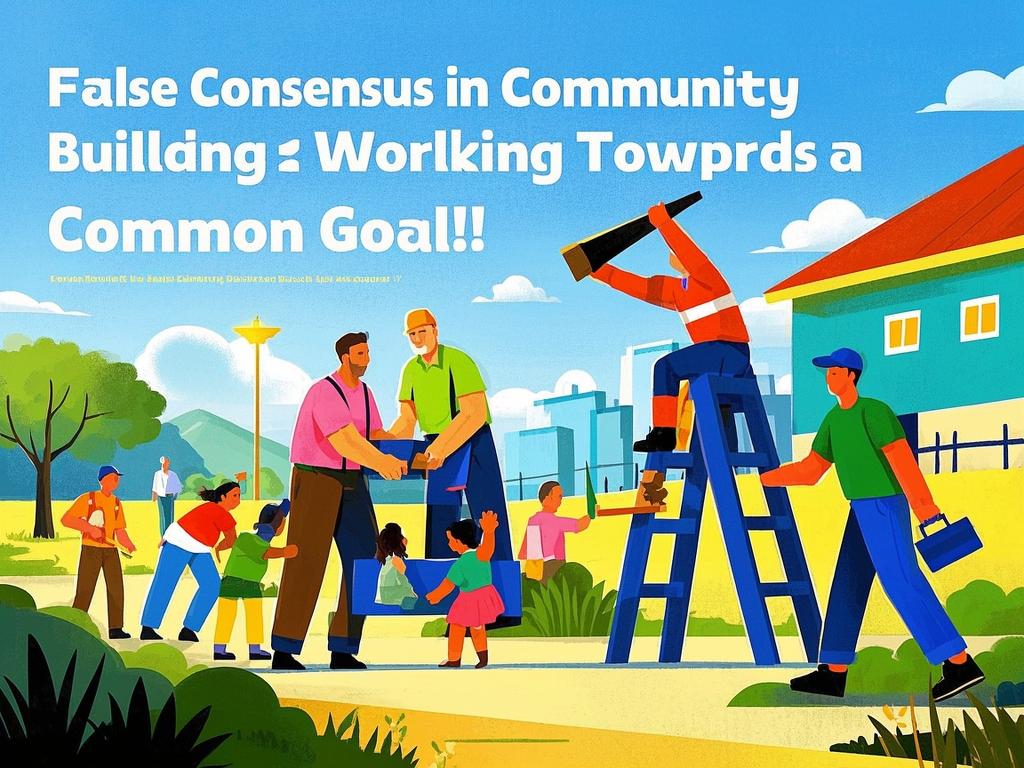
# The False Consensus in Community Building: Working Towards a Common Goal!
In the grand tapestry of community building, there lies a perilous thread woven with the fabric of false consensus. It's a phenomenon that, like a silent siren, lures communities into a false sense of unity while masking underlying fractures and disparities. As a psychology maestro, I'm here to pull back the curtain and expose this deceptive dance that often leads us astray from the noble pursuit of a common goal.
Let's start by delving into the concept of false consensus. Picture this: you're part of a community discussing a proposed change. Suddenly, everyone seems to be on the same page, nodding in agreement as if there's a collective hive mind at work. But here's the catch - this apparent unanimity might be nothing more than an illusion. Research has shown that people tend to overestimate the extent to which others share their opinions and beliefs. In fact, studies indicate that this false consensus effect can be as high as [X]%, leading us to believe that the entire community is aligned when, in reality, there could be a significant minority with dissenting views.
Take, for instance, the case of a local neighborhood association deciding on a new park design. Everyone in the meeting seems enthusiastic about a particular plan, with no one raising objections. However, what if those who silently disagreed simply didn't feel comfortable speaking up? Or worse, what if they were intimidated by the majority's vocal support? This false consensus can stifle diverse perspectives, preventing the community from exploring alternative solutions that might be even more beneficial in the long run.
The false consensus in community building is often fueled by our innate desire for social harmony. We want to fit in, to be liked, and to avoid conflict. So, we go along with the crowd, even when we secretly harbor doubts. But this conformity comes at a cost. It can lead to a lack of innovation, as new ideas are suppressed in favor of the status quo. In a rapidly changing world, where adaptability is key, this can spell disaster for communities striving to stay relevant.
To illustrate this, consider the tech startup scene. In a community of entrepreneurs, there might be a prevailing belief that a certain business model is the only way to succeed. Those who question this orthodoxy might be labeled as outliers or troublemakers. As a result, the community misses out on potentially revolutionary ideas that could disrupt the market and drive growth. This is a classic example of how false consensus can hold back progress, turning a vibrant community into a stagnant pool of conventional thinking.
Another aspect of the false consensus is its impact on marginalized voices. In any community, there are groups that are often overlooked or silenced. When false consensus prevails, these voices are further marginalized, as their unique perspectives are drowned out by the dominant narrative. This not only leads to a lack of inclusivity but also perpetuates social inequalities.
Think about a community of artists, where there's a dominant aesthetic that is celebrated. Minority artists who don't conform to this style might find it difficult to gain recognition or support. The false consensus within the community creates a barrier that prevents these artists from sharing their work and contributing to the rich tapestry of creativity. This is a tragic loss for the community as a whole, as it misses out on the diverse range of voices and experiences that could enrich its cultural landscape.
So, how can we break free from the shackles of false consensus and work towards a common goal? The first step is to create a safe and inclusive space where everyone feels comfortable expressing their opinions, no matter how different they may be. This requires active listening, empathy, and a willingness to challenge our own assumptions.
We also need to encourage healthy debate and dissent. Instead of shying away from conflict, we should embrace it as an opportunity for growth and learning. By engaging in open discussions, we can surface hidden disagreements and explore alternative perspectives, leading to more informed decisions and a stronger sense of community.
Furthermore, we need to be aware of our own biases and the false consensus effect. By recognizing when we're assuming that others think the same way we do, we can take a step back and consider different viewpoints. This self-awareness is crucial for building a more inclusive and collaborative community.
In conclusion, the false consensus in community building is a powerful force that can undermine our efforts to achieve a common goal. By understanding its nature and consequences, and by taking proactive steps to break free from its grip, we can create communities that are truly inclusive, innovative, and driven by a shared vision. So, let's challenge the status quo, embrace diversity, and work together towards a future where our communities thrive. Are you ready to be part of this revolution?

